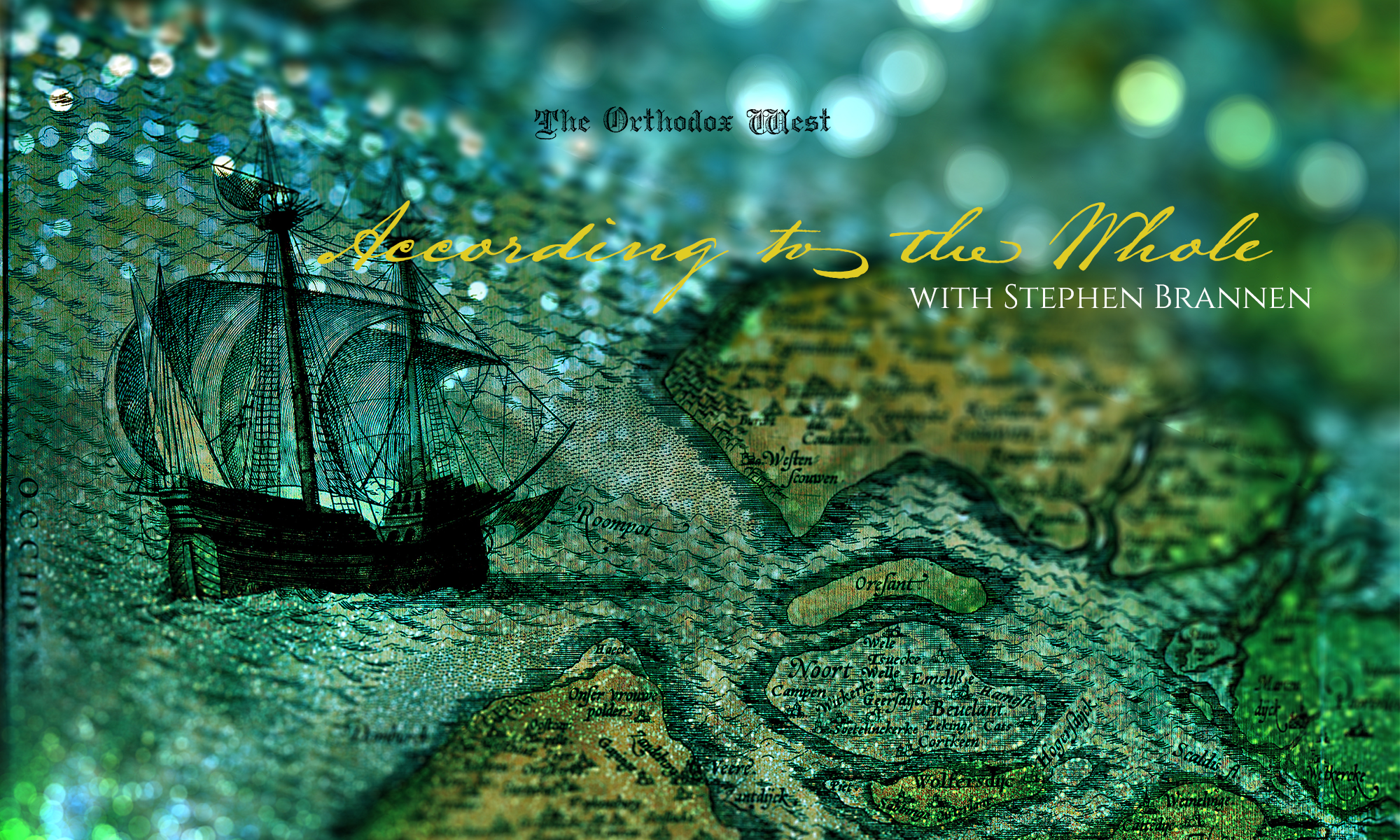In the Western Tradition, Septuagesima Sunday kicks off the Easter cycle of the Church Year (like beginning the Triodion in the Eastern Rite). As the first of the three Sundays which make up the Pre-Lent season in the West, Septuagesima (the Sunday nearest the 70th day before Easter) makes it clear liturgically that we have turned a corner: all “alleluias” are suppressed until Easter, as well as other exuberantly joyful hymns and canticles, and the liturgical color is changed to violet. The lectionary also shifts gears to themes appropriate to this new path: themes of repentance, renunciation, and works of mercy.
Continue reading “The Secret Current: Lectionary Lessons and the Way to Easter”The Great O Antiphons

One of the oldest and most enduring features of Advent in the Western tradition of the Church is the special set of antiphons sung with the Magnificat at Vespers in the days leading up to Christmas Eve. Usually called the “Greater Antiphons” in liturgical books, they’re more colloquially called the “O Antiphons” because each begins with the interjection “O” (O Emmanuel…, etc.).
The oldest and most traditional set of O Antiphons address Christ by seven titles, in this order: Sapientia (Wisdom), Adonai (Lord), Radix Jesse (Root of Jesse), Clavis David (Key of David), Oriens (Dayspring/Dawn), Rex Gentium (King of the Nations/Gentiles), and Emmanuel (God-with-us). The first letters of each title going back from Emmanuel (Dec 24) to Sapientia (Dec 17) form the Latin words Ero cras, meaning “Tomorrow I come.” The content of these antiphons was paraphrased as the verses to the Latin hymn Veni Emmanuel, translated into our familiar English hymn, O Come, O Come Emmanuel. While the history of the antiphons and their use is fascinating in itself, the most wonderful thing about them is the theology and spiritual learning that can be unpacked from these pithy poems.
Continue reading “The Great O Antiphons”Advent Music
The season of Advent has arrived. But nothing kicks the legs out from under our observance of Advent like premature Christmas songs. Advent, of course, is the season leading up to Christmas, designed to focus us on the hope and expectation of Christ’s future advent (arrival) and the celebration of his first advent. The spirit of Advent, then, is of watchfulness and waiting. Because of this, Christmas songs are inappropriate to the spirit of the Advent season. They don’t jive; they’re incongruous.
Continue reading “Advent Music”Halloween as Sanity in the Modern World

Halloween is scary — apparently. From every corner of digital Christendom is sounding the quaking alarm that participation in Halloween is tantamount to inviting the devil into your house. Hearsay about pagan origins and evil practices abounds. Even cooler-headed writers skeptical of the dubious beginnings of trick-or-treating and jack-o-lanterns warn that the overall character of Halloween is unprofitable at best and harmful at worst. But there’s a countering voice among Christians (and among people of other religions or none) that Halloween is totally innocent fun, that it’s inconsequential, vacant amusement. I personally think Halloween may be more complex and interesting than either of those positions make it out to be. It may even be a source of sanity in an increasingly insane world. Continue reading “Halloween as Sanity in the Modern World”
Under the Standard of the Cross

The Exaltation of the Holy Cross on the 14th of September marks the lifting up of the True Cross before the Christians in Jerusalem after the consecration of the Church of the Holy Sepulchre in 335 AD. The lifting up of the Cross as a sign or standard to follow and venerate has been a long-established concept in Christian history. In virtually every depiction of Christ’s descent into hades and his resurrection, he carries the Cross as a scepter or banner. And from ancient prayers and chants to modern Christian hymnody, “the Cross is lifted over us, we journey in its light.“
But in Western tradition, there’s one hymn that for its antiquity, universality, and ubiquity stands above the others in its appropriateness on the Feast of the Holy Cross and as a processional song as the Cross is marched before us: The Royal Banners Forward Go. Continue reading “Under the Standard of the Cross”
“Elijah in Horeb,” by John Keble

[July 20 – Saint Elijah the Prophet]
And after the earthquake a fire; but the Lord was not in the
fire: and after the fire a still small voice. 1 KINGS xix. 12.
IN troublous days of anguish and rebuke,
While sadly round them Israel’s children look,
And their eyes fail for waiting on their Lord:
While underneath each awful arch of green,
On every mountain-top, God’s chosen scene
Of pure heart-worship, Baal is ador’d: Continue reading ““Elijah in Horeb,” by John Keble”
Rogationtide
The Two-Step Resurrection
When you picture the resurrection of Christ, what do you think of? For centuries Christians have been depicting Christ’s resurrection. In both East and West, there’s no shortage of icons, paintings, frescoes, mosaics, stained glass windows, and relief carvings of the subject. But sometimes these images depict very different looking scenes while using the same title “Resurrection.” Continue reading “The Two-Step Resurrection”
Palm Sunday According to the Whole Church
The Sad and Happy Veiling

At the Vespers of Dominica Prima Passionis, or Passion Sunday (the 5th Sunday of Lent), all of the Icons, statues, crucifixes, and other images of Christ and the Saints are veiled from sight in Western Rite churches. This custom probably seems troubling to Eastern Rite Christians, but rest assured, it’s troubling to those in the Western Rite, too. Upon entering the church at Vespers or on the Sunday morning following and seeing purple veils draped over all of the familiar and beloved images, the faithful are significantly impacted spiritually and psychologically. It’s never pleasant to have that which you love hidden from you. Continue reading “The Sad and Happy Veiling”






